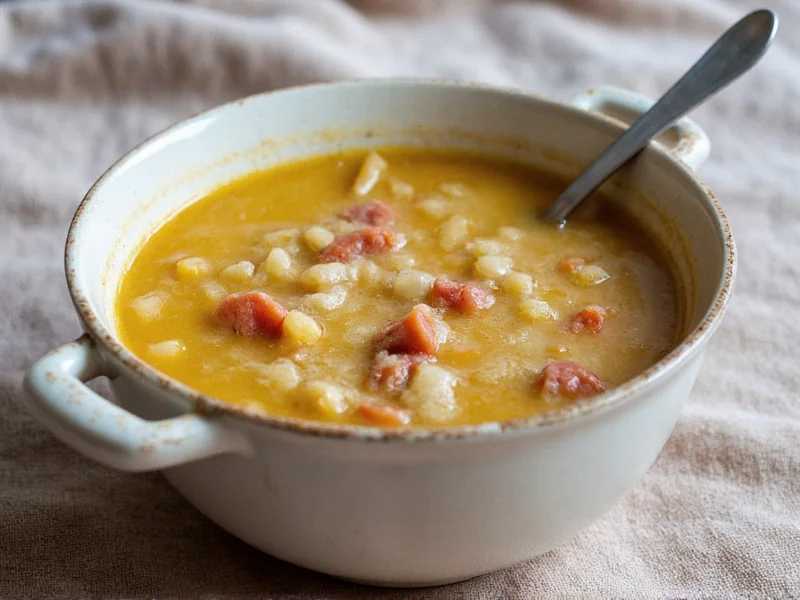The proper way to freeze soup involves cooling it rapidly to 40°F (4°C) or below within 2 hours, using airtight containers with 1-inch headspace for expansion, labeling with contents and date, and storing at 0°F (-18°C) for optimal quality. Most soups maintain best flavor and texture for 2-3 months, though they remain safe indefinitely when properly frozen. Cream-based soups require special handling to prevent separation upon thawing.
Freezing soup is one of the most practical kitchen skills for meal prep and reducing food waste. When done correctly, frozen soup retains nearly all its original flavor and nutritional value, providing a convenient homemade meal option whenever you need it. The key to successful soup freezing lies in understanding proper cooling techniques, container selection, and storage duration specific to different soup varieties.
The Science Behind Successful Soup Freezing
Understanding the physical changes that occur during freezing helps prevent common issues. When soup freezes, water molecules form ice crystals that can damage the food's cellular structure. Rapid freezing creates smaller crystals that cause less damage than slow freezing. This is why it's crucial to cool soup quickly before placing it in the freezer. The ideal method is an ice bath—place your pot in a larger container filled with ice water, stirring occasionally until the soup reaches refrigerator temperature.
Step-by-Step Freezing Process
Follow these professional techniques for perfect frozen soup every time:
- Cool properly: Never put hot soup directly in the freezer. Use an ice bath to bring temperature down to 40°F (4°C) within 2 hours.
- Portion wisely: Freeze in meal-sized portions using containers that match your typical serving size.
- Choose appropriate containers: Use freezer-safe options with proper headspace.
- Remove air: For liquid soups, leave 1-inch headspace; for thicker soups, ½-inch is sufficient.
- Label thoroughly: Include soup type, date, and any special reheating instructions.
Best Containers for Freezing Soup
Selecting the right storage vessel significantly impacts quality preservation. Consider these options:
| Container Type | Best For | Storage Duration | Special Considerations |
|---|---|---|---|
| Rigid plastic containers | All soup types | 2-3 months | Leave proper headspace; stackable |
| Freezer bags | Broth-based soups | 2-3 months | Lay flat to freeze; removes air easily |
| Glass jars | Thick pureed soups | 1-2 months | Use wide-mouth; leave extra headspace |
| Silicone molds | Small portions, soup cubes | 3-4 months | Ideal for broth concentrates |
Freezing Duration by Soup Type
Not all soups freeze equally well. Understanding the optimal storage time for different varieties prevents quality degradation:
- Broth-based soups (chicken noodle, vegetable): Maintain best quality for 3 months
- Cream-based soups (potato leek, chowders): Best within 2 months to prevent separation
- Pureed soups (butternut squash, tomato): Up to 3 months with proper storage
- Soups with pasta or rice: Freeze components separately for best texture
- Bean and legume soups: Excellent freezer candidates; maintain quality for 3-4 months
Special Handling for Cream-Based Soups
Cream-based soups present unique challenges due to their dairy content. To prevent separation when freezing soup with cream:
- Add dairy components after reheating rather than before freezing
- Include a stabilizer like cornstarch slurry (1 tablespoon cornstarch per cup of liquid)
- Freeze without dairy and add cream when reheating
- Stir vigorously while reheating to re-emulsify separated components
Thawing and Reheating Methods
How you thaw and reheat frozen soup dramatically affects final quality. Follow these best practices for reheating frozen soup properly:
- Refrigerator thawing: Transfer container to refrigerator 24-48 hours before needed
- Cold water method: Submerge sealed container in cold water, changing water every 30 minutes
- Direct reheating: For soups frozen in portion-sized containers, add to saucepan with ¼ cup water
- Slow cooker method: Thaw partially first, then heat on low setting
When reheating, bring soup to 165°F (74°C) for food safety. Stir frequently and avoid boiling cream-based varieties. For soups that separate, an immersion blender can restore smooth texture.
Troubleshooting Common Freezing Issues
Even with proper technique, problems can occur. Here's how to address frequent challenges when freezing soup without freezer burn:
- Freezer burn: Caused by air exposure; prevent by removing excess air from containers and using proper headspace
- Ice crystals: Result from temperature fluctuations; maintain consistent freezer temperature at 0°F (-18°C)
- Texture changes: Thickeners like roux or cornstarch help maintain consistency
- Flavor concentration: Some ingredients intensify; adjust seasoning after thawing
- Separation: Common in cream soups; whisk vigorously while reheating
Food Safety Guidelines
Following proper food safety protocols when freezing soup is essential. Soup must cool from 140°F to 70°F within 2 hours and from 70°F to 40°F within an additional 2 hours before freezing. Store at 0°F (-18°C) or below. While frozen soup remains safe indefinitely, quality degrades over time. Discard soup showing signs of spoilage after thawing, including off odors, mold, or slimy texture.
Advanced Freezing Techniques
For those looking to optimize their soup freezing process, consider these professional methods:
- Flash freezing broth: Pour into ice cube trays, then transfer cubes to freezer bags
- Vacuum sealing: Removes air completely, extending quality retention by 30-50%
- Layered freezing: For complex soups, freeze components separately then combine
- Seasoning adjustment: Under-season before freezing, as flavors concentrate during storage











 浙公网安备
33010002000092号
浙公网安备
33010002000092号 浙B2-20120091-4
浙B2-20120091-4